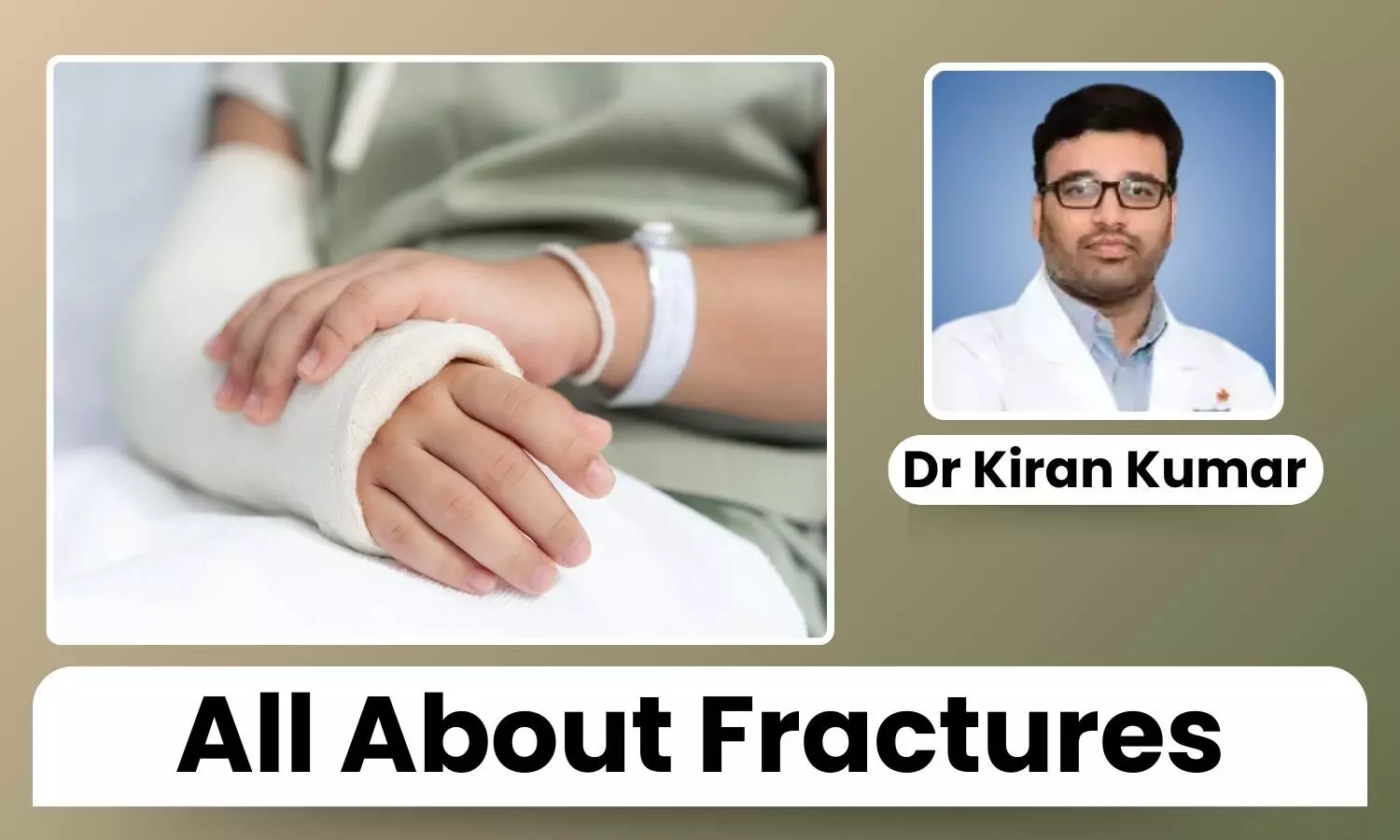Fractures: Types, Symptoms, and Treatment Options - Dr Kiran Kumar

A fracture, in medical terms, refers to a break in a bone. These breaks can range from a hairline crack to a complete shattering of the bone. Fractures are a common injury resulting from various causes, including trauma, overuse, and underlying medical conditions.
Understanding the different types of fractures, recognizing their symptoms, and knowing the available treatment options are crucial for effective management and recovery.
Types of Fractures
Fractures can be categorized according to various factors, such as severity of the break, the condition of the bone, and the displacement of the bone nibler (the bone nibler are the fragments of the broken bone).
Here are some common types:
· Simple (Closed) Fracture: A fracture in which the bone breaks, but the skin is unbroken.
· Compound (open) Fracture: The broken bone protrudes through the skin, posing a risk for infection.
· Stress Fracture: Small cracks in the bone, usually from repetitive stress or overuse.
· Pathological Fracture: A fracture that occurs in bone that is weakened by disease (for example, osteoporosis or cancer).
Symptoms of Fractures
Depending on the area of the body where the fractures possibly might be, symptoms differ.
Common symptoms include:
· Pain: Intense pain in the fracture area, usually aggravated by movement.
· Swelling: Fast swelling around the affected area.
· Bruising: Darkening of the skin caused by blood under the surface.
· Deformity: Obvious deformity or angulation of the limb.
· Tenderness: Soreness when touching the involved site.
· Loss of function in the limb: Trouble moving the affected limb or bearing weight.
· Grating sensation: A crunching or grinding noise or sensation to motion of the limb (crepitus).
Treatment Options
Fracture treatment aims to realign the broken bone, which should help heal and restore function. Treatment is based on the type, location, severity of the fracture. Treatment options include:
1. Immobilisation:
· Casting: A plaster or fibreglass cast is applied around the broken bone to keep it still whilst it heals in the right position.
· Splint: A splint is a support used to immobilize a limb, usually temporarily, before applying a cast.
· Brace: This is supportive and restricted motion, usually for stable fractures or used after the removal of the cast.
2. Reduction:
· Closed Reduction: Setting the broken bone without incising the skin
· Open reduction: It is when a surgeon surgically realigns the fractured bones; it simply means exposing the bone and fixing the bones
3. Surgery:
· Internal Fixation: Using plates, screws, rods, or wires to hold broken bone fragments together
· External Fixator: An external frame providing stability through pins inserted into the bone
· Joint Replacement: If you have a severe fracture that involves a joint, you may need a joint replacement
4. Medications:
· Pain Control Meds: To help manage pain and discomfort.
· Antibiotics: Antibiotics are given in compound fractures to avoid infection.
· Tetanus Prophylaxis: A tetanus shot may be administered to prevent tetanus infection in the case of open fracture
· Physical Therapy: Following growth of bone, physical therapy is used to gain strength, flexibility, and range of motion.
· RICE (Rest, Ice, Compression, Elevation): Often used as initial treatment to decrease swelling and pain.
Recovery and Rehabilitation
The major reasons for fracture recovery and healing depend on fracture with its severity and the health of an individual. Adhering to the physician's orders for rest, medications, and physical therapy is imperative.
In rehabilitation, vital for restoring function and preventing long-term complications.


